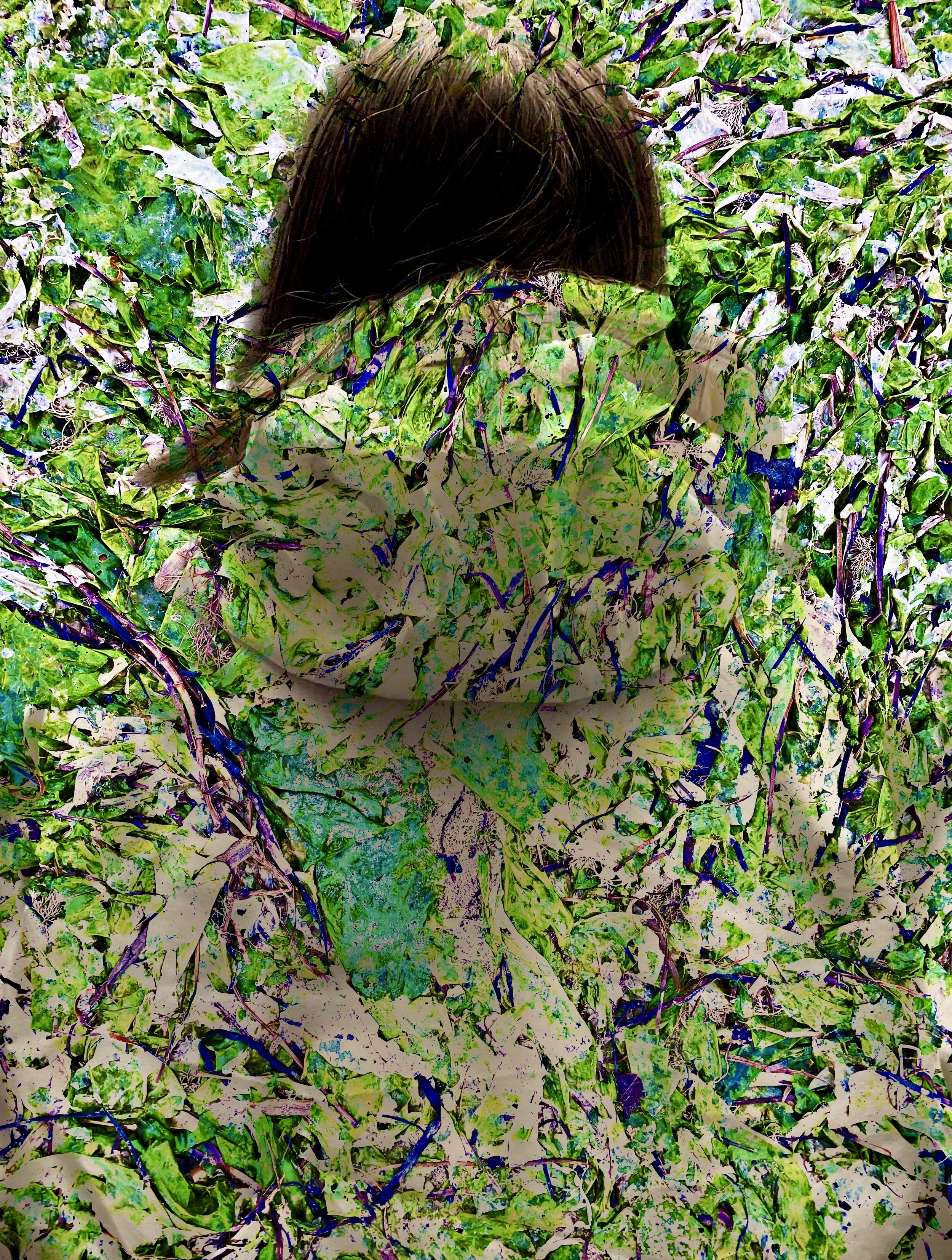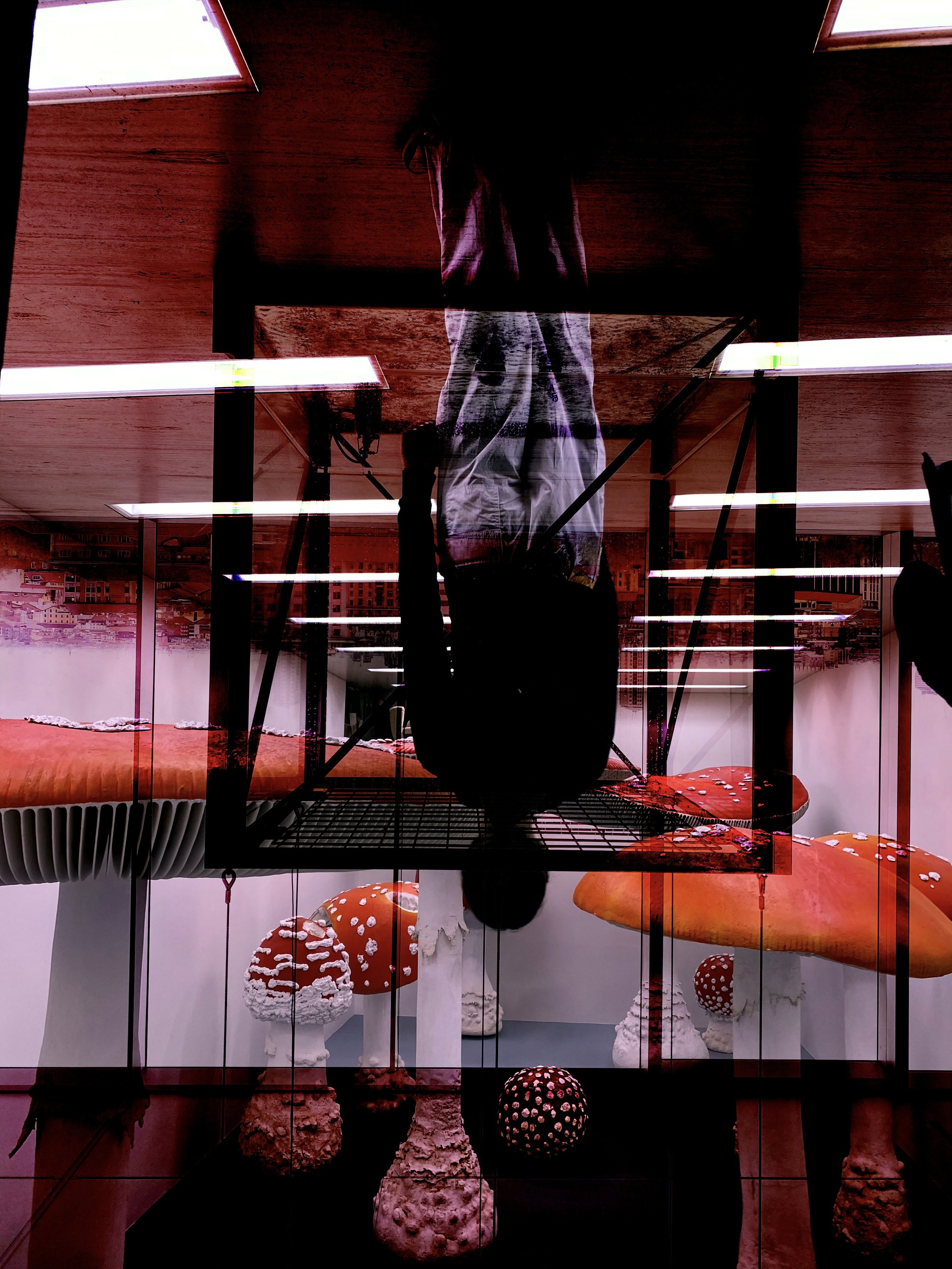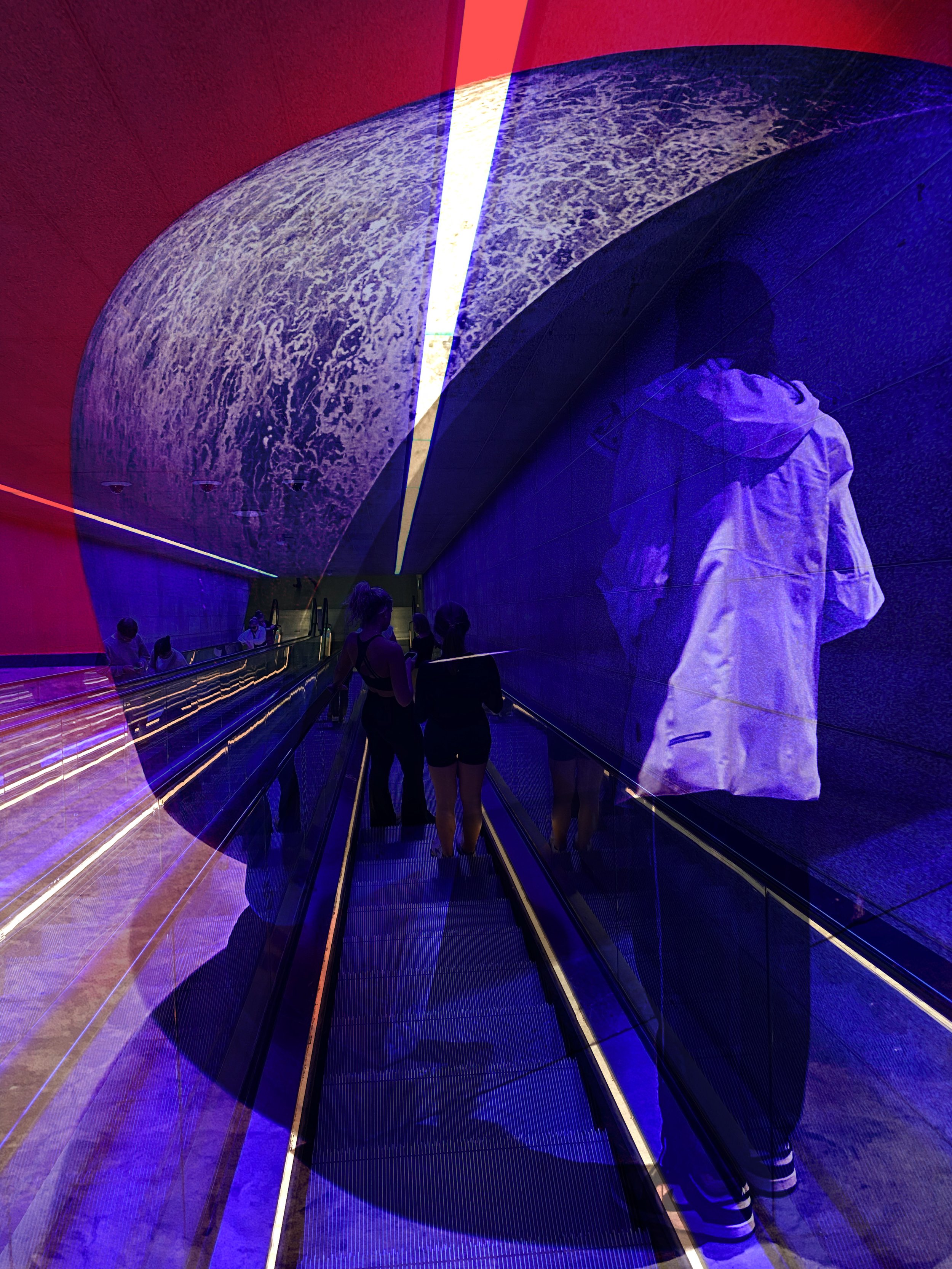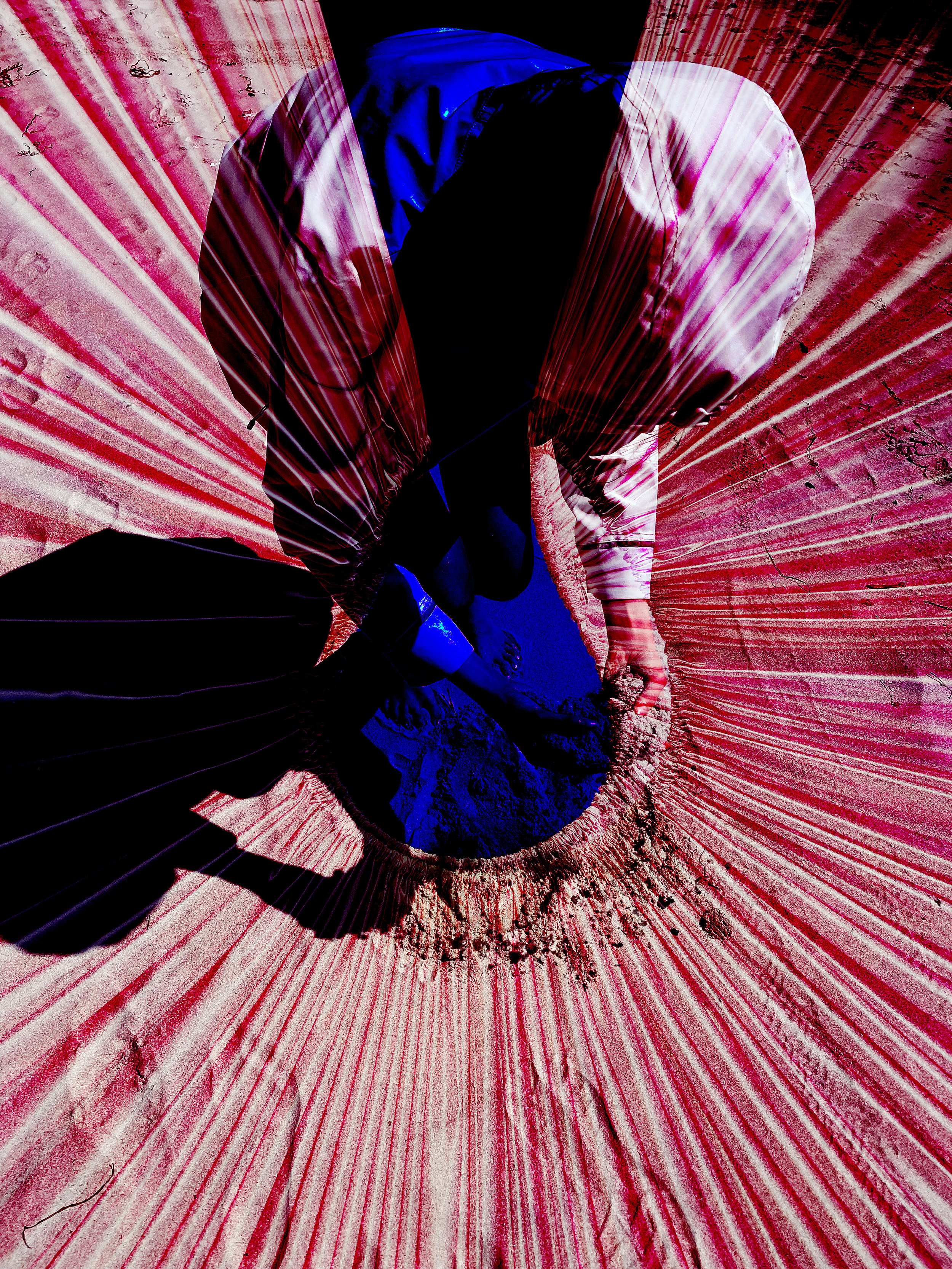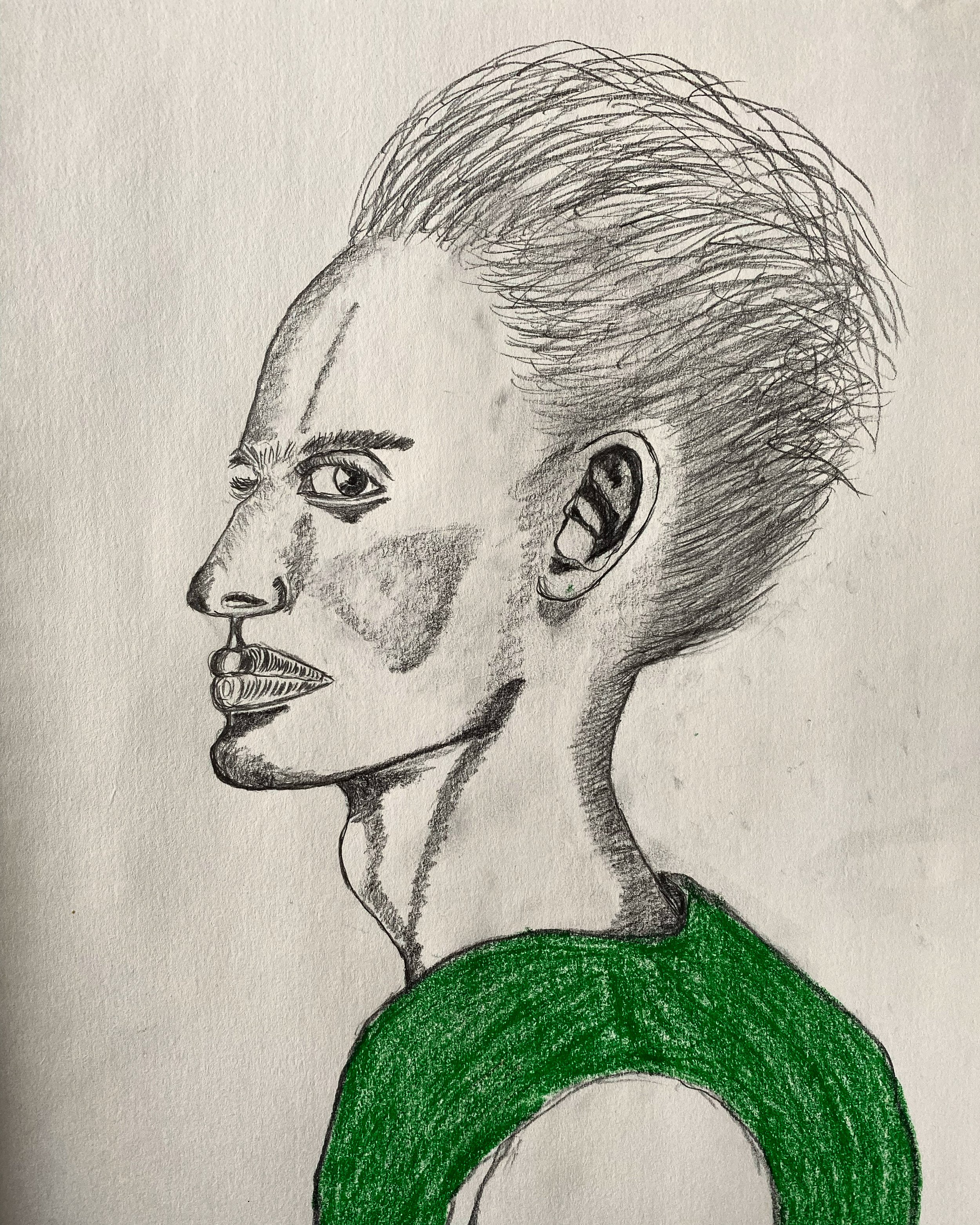Natalie Egger
Natalie Egger
Natalie Egger's oeuvre is a vivid journey through the realms of the abstract and the recognizably real, blending the boundaries between traditional drawings and contemporary digital art. Her work showcases an innovative use of color, form, and technique, creating a tapestry of pieces that invite deep contemplation and emotional response.
In her traditional drawings, Egger's adept handling of pencil and charcoal offers a nuanced exploration of human and organic forms. The lines are confident, yet there is a delicacy in her work that suggests a profound understanding of her subjects. The pencil sketches of human figures convey a raw emotional intensity that is palpable, their gestures and expressions captured with a sense of immediacy and spontaneity that is often only found in live studies. These works speak to the human condition, a narrative thread that weaves through the collection, suggesting both vulnerability and strength.
Transitioning to her digital art, Egger’s approach becomes more experimental. The images are a complex layering of textures, colors, and shapes that challenge the viewer's perceptions. The first piece, characterized by its upside-down perspective and stark red mushrooms against a monochromatic background, plays with the idea of alternate realities. The juxtaposition of the natural with the synthetic reflects a theme of duality and contradiction.
The next digital piece immerses the viewer into what seems like a cosmic journey. Egger employs a celestial motif, with a large moon-like form dominating the scene. The use of blue tones against the red backdrop gives the piece an otherworldly atmosphere. The human figure, dressed in white, appears to be ascending an escalator towards this cosmic object, invoking thoughts of exploration and the quest for knowledge.
Her other digital piece is a maelstrom of greenery, with the human form barely discernible amidst the chaos of nature. This piece is particularly evocative, suggesting a return to the elemental, a disintegration of the self into the primal forces of the earth. It's an amalgamation of textures that resembles a dance between creation and decay, reflecting the cycle of life in a manner that is both disturbing and beautiful.
Egger's use of color is particularly noteworthy. In one piece, she employs a high-contrast palette to heighten the visual impact, while in another, she opts for a more harmonious blend that soothes and invites introspection. This duality of approach is a testament to her versatility as an artist and her ability to evoke varied emotional responses through her use of chromatic schemes.
One of the most striking aspects of her work is the way she incorporates elements of nature. Whether it's the intricate patterns on the mushrooms or the tangled web of greenery that envelops a figure, nature is portrayed with an almost sacred reverence. It's as if Egger is reminding us of the intricate connection between humanity and the natural world, a theme that resonates deeply in an age where this connection is often forgotten.
The integration of nature continues in a piece where the sky is reflected in an unsettling red hue, with what appears to be a carousel in the middle. This piece seems to comment on the passage of time and the cyclical nature of life. The carousel, a symbol of childhood innocence and joy, contrasted against the foreboding sky, creates a sense of nostalgia laced with apprehension, suggesting the complex layers of memory and experience.
The portrait drawings demonstrate Egger's grasp of human anatomy and psychological depth. The subjects’ faces are rendered with stark realism, capturing the intricacies of their expressions and the stories etched into their features. These portraits, unflinching and raw, draw the viewer into an intimate dialogue with the subjects, prompting a reflection on identity, humanity, and the myriad stories that every individual carries.
Natalie Egger's artwork serves as a mirror to the soul, as much as it is a window to her own creative spirit. Her digital art pieces, with their bold use of digital manipulation, reflect a modernistic approach to art that is both innovative and introspective. The layering of images, sometimes disorienting, speaks to the complexity of the modern psyche, inundated with information and yet searching for meaning.
In the digital realm, Egger displays a mastery of the medium's potential, crafting images that oscillate between the surreal and the hyper-real. The distortion of familiar forms challenges the viewer to question their perceptions of reality. The artwork featuring the deep blue and vibrant red escalator scene is particularly evocative, hinting at a voyage not just through space but through the layers of one’s consciousness. The juxtaposition of ordinary human activity against the backdrop of an almost alien landscape suggests a narrative of transition and discovery.
Egger's art does not shy away from the darker aspects of existence. There is a haunting quality to some of her works, where the interplay of shadows and light, the blurring of lines between the natural and the artificial, all coalesce to form an atmosphere that is enigmatic and slightly unsettling. This quality is most apparent in her portraiture, where the stark realism of the subjects is offset by the intensity in their eyes, a testament to her ability to capture not just the physical but the emotional essence of her subjects. The rawness of these depictions invites empathy, compelling us to acknowledge our shared vulnerabilities.
Her traditional pencil sketches, too, possess an organic fluidity, indicative of a deep reverence for the human form. Each stroke of the pencil is deliberate, tracing the contours of muscle and bone, the creases of skin, and the softness of hair with a sensitivity that is palpable. These sketches, stripped of color, rely on the interplay of light and shadow to convey depth, both visually and emotionally.
Egger’s artistry extends to the way she conceptualizes space within her compositions. In some pieces, figures are confined within the boundaries of their environment, while in others, they are set against vast, open landscapes that seem to extend infinitely. This manipulation of space works in tandem with her subject matter to evoke feelings of isolation or freedom, confinement or boundlessness.
In her exploration of the human condition, Egger seems to be searching for a universal language, one that transcends the barriers of culture and time. Her figures, often devoid of specific context, become archetypes, embodying the collective experiences of struggle, joy, introspection, and transcendence. Through her art, Egger communicates the intangible aspects of our existence, the emotional undercurrents that define and unite us.
Natalie Egger's body of work is a profound commentary on the human experience. Her art, both digital and traditional, transcends mere visual aesthetics to become a dialogue with the viewer. Each piece, with its own unique language of shapes, colors, and textures, tells a story that is open to interpretation but always deeply human. Egger’s oeuvre is not just a collection of images but a mosaic of emotions and ideas, inviting us to reflect, to feel, and to connect.
By Marta Puig
Contemporary Art Curator Magazine

